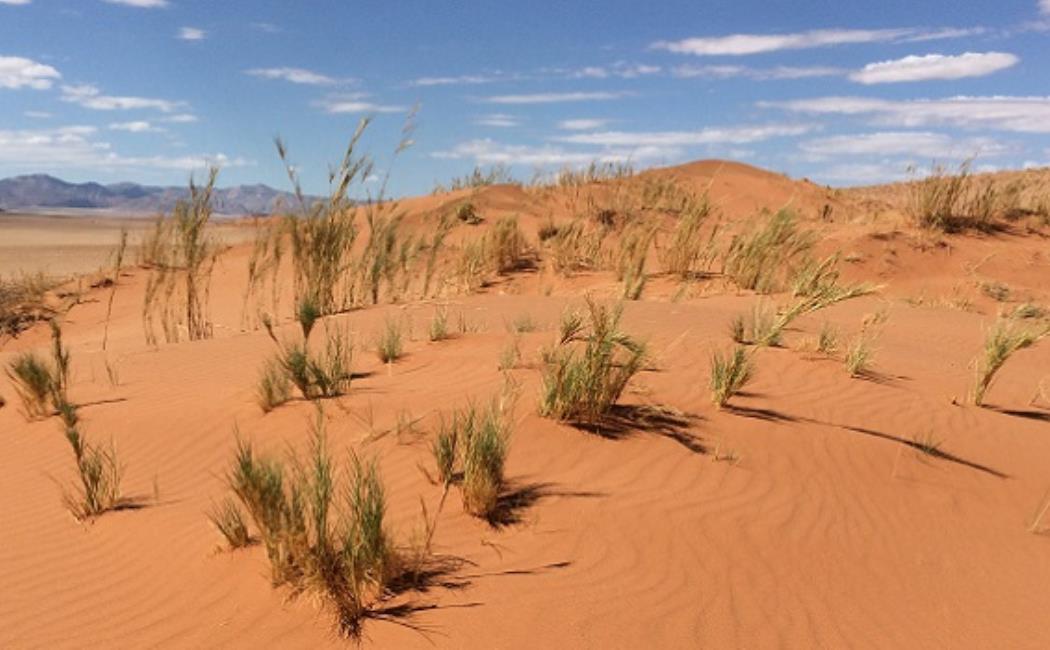
Speargrass recruit sandy microbes for help
13 March, 2019
Sticky, sandy sheaths surrounding the roots of three speargrass species growing in the Namib Desert recruit whatever growth-promoting bacteria are available in the surrounding sand. This is contrary to the more specialized root sheaths of plants growing in resource-rich soils, where different plant species recruit different types of bacteria.
The research led by KAUST has implications for predicting how well plants with root sheaths, including some food crops, will adapt to changing environmental conditions and stress.
The rhizosheath is an adaptive feature developed by some plant species that strengthens the contact between plant roots and the surrounding soil to improve nutrient and water uptake. Root hairs, fungal filaments, and a sticky material formed by the roots and microorganisms cause sand or soil granules to aggregate and form a sheath of soil encasing the entire root system. Desert speargrass species are among the types of plants to develop this adaptive trait and, until now, few studies have been conducted on this species’ rhizosheath-root system.
Click here to read the full story
Image: The sand dune selected as the sampling site in the Namib Desert. The team analyzed the microbial content of the soil and the roots of three different species of desert speargrass growing on the top, middle and bottom of the dune.
© 2018 KAUST